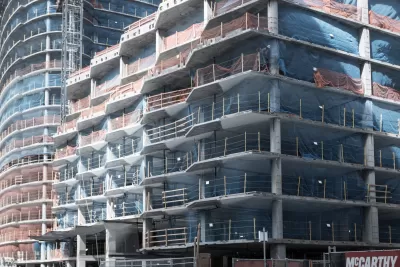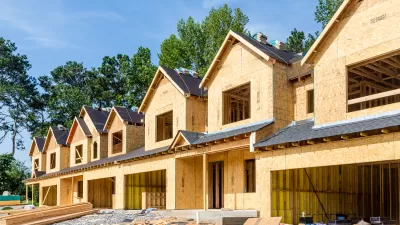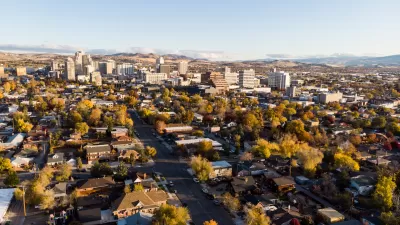A new working paper adds another perspective to the debate about easing zoning regulations to address the affordable housing crisis.

Nolan Gray writes that new research from Evan Mast of the W.E. Upjohn Institute for Employment Research offers empirical evidence of the longer-term effects of upzoning on housing affordability. The working paper provides new insight into the robust debate, including Richard Florida’s look at a recent paper by Andrés Rodríguez-Pose and Michael Storper.
Mast’s research takes a closer look at filtering, the process by which newer housing frees up older, less expensive housing. His analysis of housing data from 12 U.S. cities includes tracing back household moves, what he calls a "migration chain," says Gray:
His model suggests that for every 100 luxury units built in wealthier neighborhoods, as many as 48 households in moderate-income neighborhoods are able to move into housing that better suits their needs, vacating an existing unit in the process. Somewhere between 10 and 20 of these households are coming from among the city’s lowest-income neighborhoods, vacating units and reducing demand where housing is most likely to be affordable for working families.
While Gray notes that the upzoning debate is far from resolved, these findings could play an important role in developing strategies and policies to tackle the affordable housing problem. "For starters, the case against allowing new market-rate housing in high-income neighborhoods would be considerably weakened. And, as Daniel Herriges points out over on Strong Towns, it could also call into question well-meaning policies that suppress the construction of new housing, such as inclusionary zoning."
FULL STORY: How Luxury Units Turn Into Affordable Housing

Planetizen Federal Action Tracker
A weekly monitor of how Trump’s orders and actions are impacting planners and planning in America.

Congressman Proposes Bill to Rename DC Metro “Trump Train”
The Make Autorail Great Again Act would withhold federal funding to the system until the Washington Metropolitan Area Transit Authority (WMATA), rebrands as the Washington Metropolitan Authority for Greater Access (WMAGA).

The Simple Legislative Tool Transforming Vacant Downtowns
In California, Michigan and Georgia, an easy win is bringing dollars — and delight — back to city centers.

The States Losing Rural Delivery Rooms at an Alarming Pace
In some states, as few as 9% of rural hospitals still deliver babies. As a result, rising pre-term births, no adequate pre-term care and harrowing close calls are a growing reality.

The Small South Asian Republic Going all in on EVs
Thanks to one simple policy change less than five years ago, 65% of new cars in this Himalayan country are now electric.

DC Backpedals on Bike Lane Protection, Swaps Barriers for Paint
Citing aesthetic concerns, the city is removing the concrete barriers and flexposts that once separated Arizona Avenue cyclists from motor vehicles.
Urban Design for Planners 1: Software Tools
This six-course series explores essential urban design concepts using open source software and equips planners with the tools they need to participate fully in the urban design process.
Planning for Universal Design
Learn the tools for implementing Universal Design in planning regulations.
Smith Gee Studio
City of Charlotte
City of Camden Redevelopment Agency
City of Astoria
Transportation Research & Education Center (TREC) at Portland State University
US High Speed Rail Association
City of Camden Redevelopment Agency
Municipality of Princeton (NJ)





























